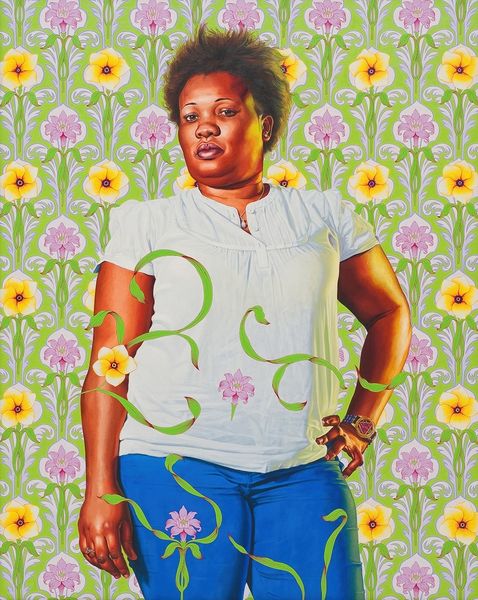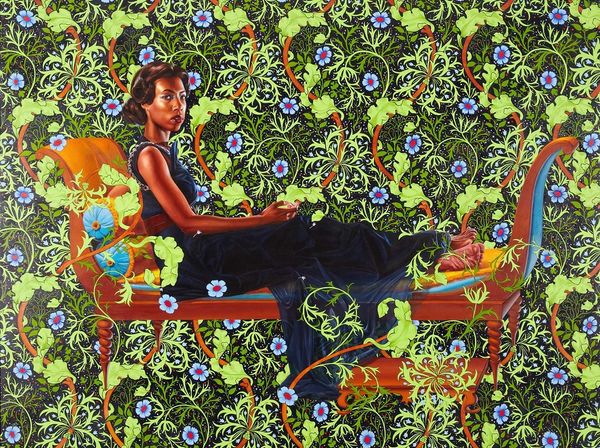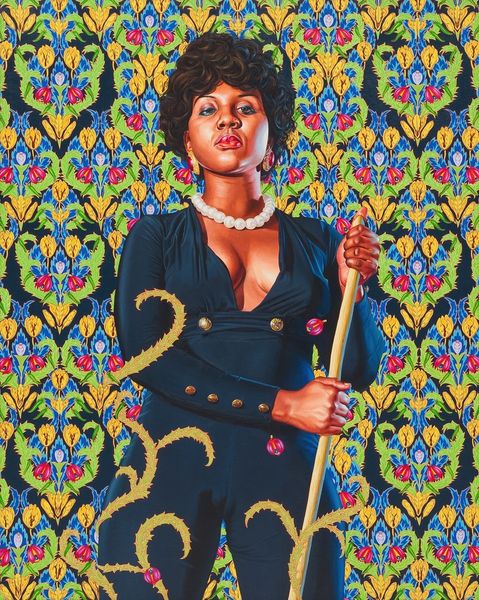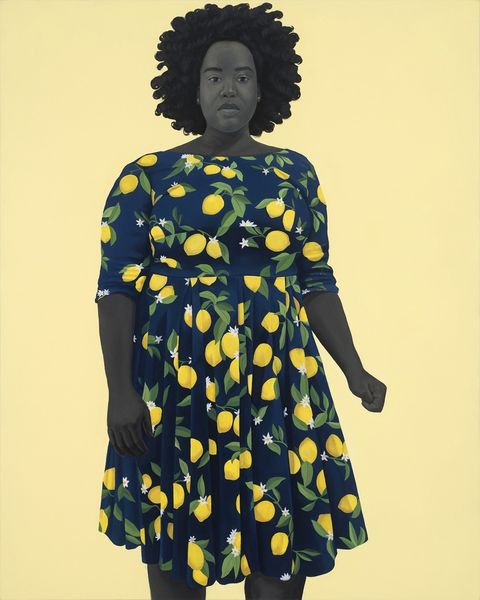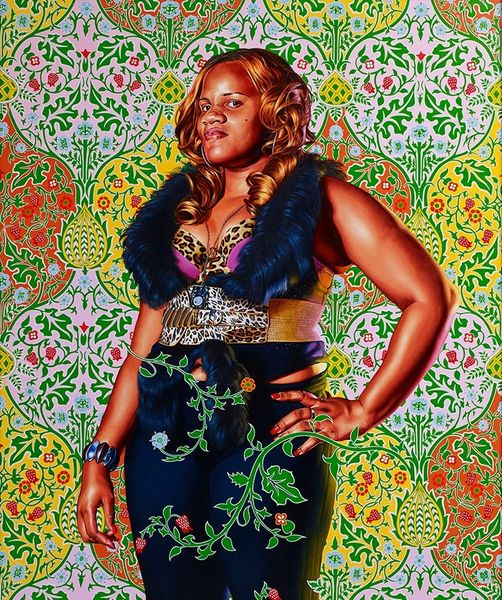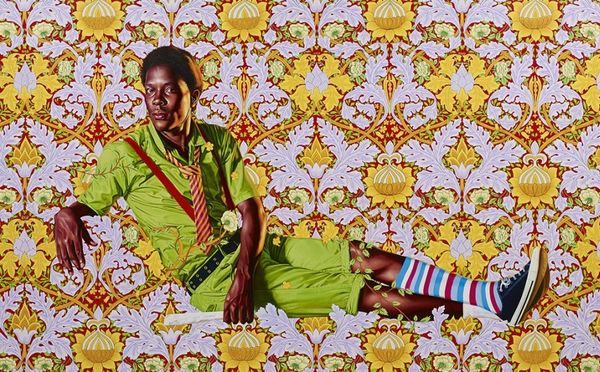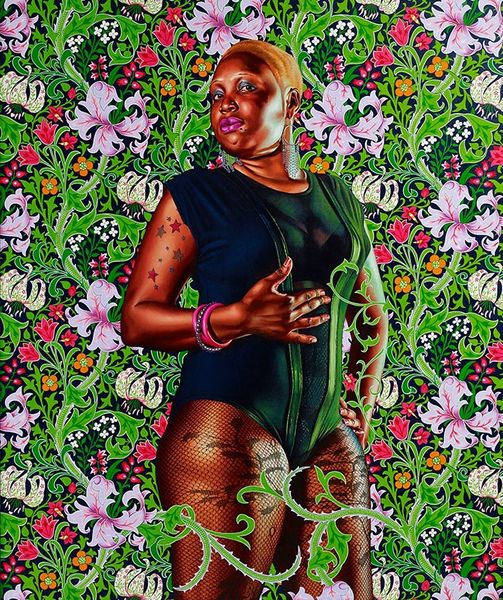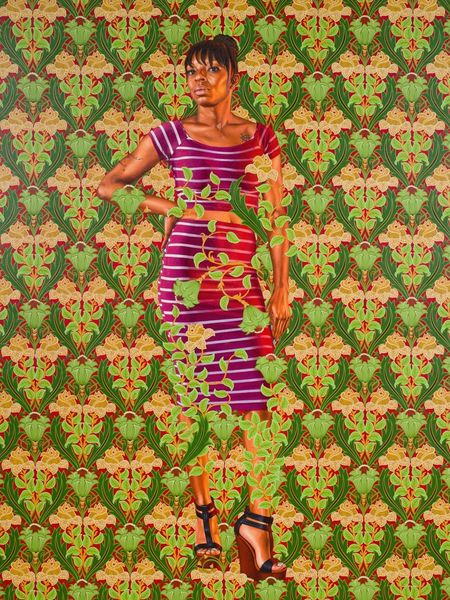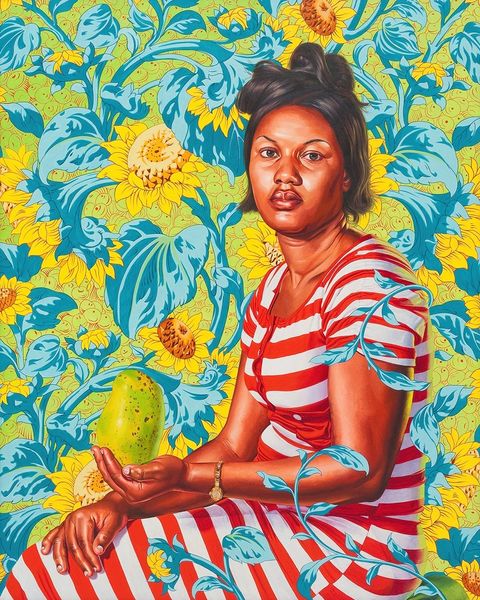
painting, acrylic-paint
#
portrait
#
pattern-and-decoration
#
contemporary
#
painting
#
pop art
#
acrylic-paint
#
geometric pattern
Copyright: Modern Artists: Artvee
Curator: Kehinde Wiley’s “The Comtesse Of Valmont,” painted in 2018, greets us with its commanding presence. Editor: The immediate impression is the tension—the formal portrait juxtaposed against that vibrant, almost overwhelming backdrop. It’s a very bold visual statement. Curator: Indeed. Wiley masterfully plays with contrast. He’s working here in acrylic, employing appropriation by embedding a contemporary Black woman within the visual language of historical European portraiture. This subverts expectations, challenging established notions of power and representation in art. Editor: For me, it raises questions about the production process itself. Who are the artisans that bring this pattern to life, if the background isn't simply painted? How do their labor and skill intersect with Wiley’s artistic vision? There’s a material dialogue at play beyond just paint on canvas. The choice of the patterned background—its scale, its repetition—it becomes almost like wallpaper, flattening the space, questioning high and low art. Curator: Absolutely. The patterned-and-decoration element fights against the classical portrait format, yet each complements the other. The floral design almost cocoons the subject. The sitter’s gaze, her posture… all meticulously placed in relation to the visual ornamentation. Note how the flowers near her reference Dutch Golden Age painting traditions in terms of symbolic meaning through botanical subject matter. The scale further demands our attention to line, shape and detail in a carefully controlled fashion. Editor: And her clothes…the casual top and track pants with stiletto heels—the texture, fabric, and how it's rendered...it suggests an intersection of fashion, identity, and urban experience. Wiley doesn't shy away from using very everyday materials of self-fashioning and making it art. The very tools for survival and celebration of oneself is powerful! Curator: Wiley compels us to reconsider the historical narrative, highlighting its omissions and exclusions while simultaneously expanding our understanding of portraiture’s capacity for reinvention. It truly demonstrates contemporary artwork’s power. Editor: For me, Wiley turns the tradition on its head. His work provides visibility while questioning labor, production and value inherent to it and is one I will continue reflecting on.
Comments
No comments
Be the first to comment and join the conversation on the ultimate creative platform.


